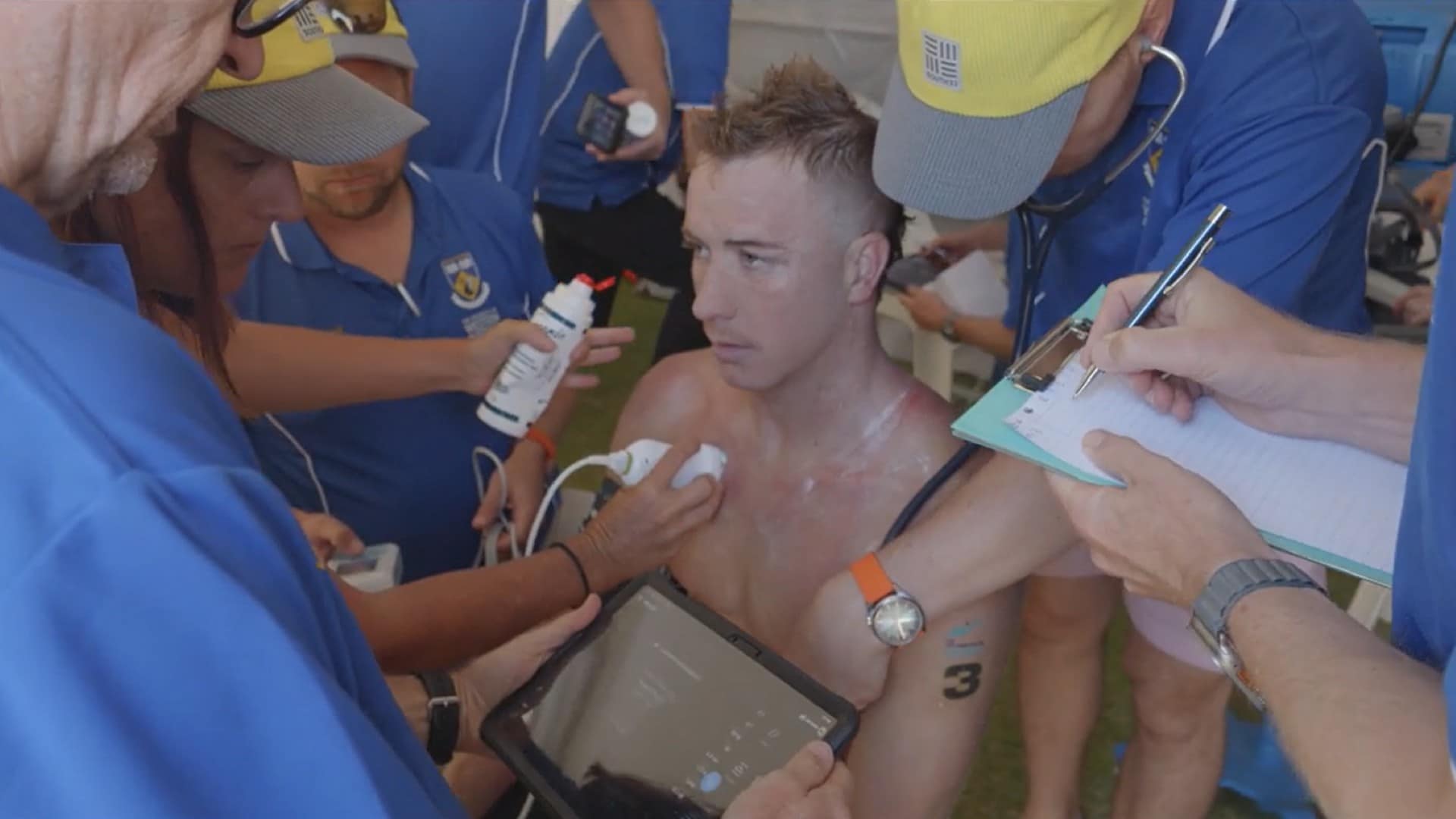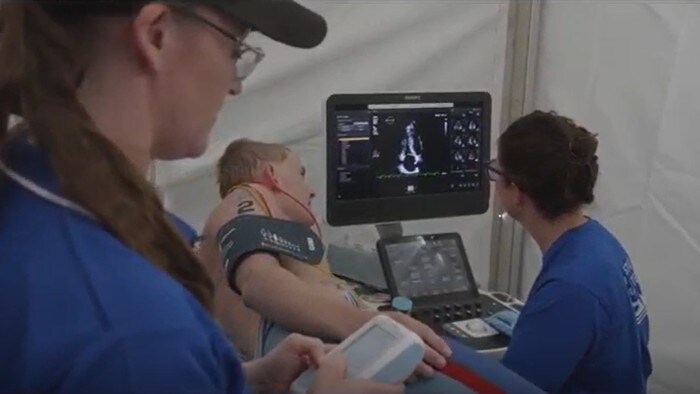Apr 29, 2025
Philips Ultrasound Drives Landmark SIPE Research at Rottnest Swim

The Rottnest Channel Swim (RCS), a 20km open water competition from Cottesloe Beach to Rottnest Island off the coast of Perth in Western Australia, is a focal point for groundbreaking medical research supported by Philips.
The University of Western Australia (UWA) has been conducting a multi-year study of swimming-induced pulmonary oedema (SIPE) at this annual event. Philips provides crucial ultrasound technology for the study, the largest of its kind.
SIPE occurs when excess fluid accumulates in the lungs, causing acute shortness of breath during or immediately after swimming. Symptoms include whistling or crackling sounds in the chest, an unexplained cough, coughing up phlegm or tightness in the chest [1]. SIPE is a serious and potentially fatal condition that, due to its insidious presentation and a lack of data on its incidence rate and pathophysiology, is often overlooked until an athlete is unwell. In 2022, 55% of surveyed swimmers who took part in the Rottnest Swim reported at least one symptom of SIPE, and multiple individuals have been hospitalised due to this condition at numerous previous crossings. With the increasing popularity of open water swimming throughout the world, there is a growing need to better understand SIPE and the associated risk factors of the condition.
The multi-year SIPE study, led by UWA Associate Professor Louise Naylor, has been underway since 2022. Dr Naylor and her team postulate that the combination of the pressure of the water on the body, exposure to cold, and prolonged exercise forces blood from the extremities into the chest, which increases the pressure in the tiny capillaries in the lungs and may result in pulmonary oedema.
At the 2025 competition, the invitation to participate in the trial was extended to all marathon swimmers. More than 160 presented for post-race lung scans, and approximately 35 swimmers underwent pre-event testing, including an echocardiogram at rest and under stress conditions. They were tested again immediately post-marathon when they arrived on Rottnest Island.

Philips provided advanced Cardiac Ultrasound equipment for use at the swim, including the Philips EPIQ CVx and Affiniti CVx Ultrasound systems, as well as the Compact 5500CV, and hand-held Lumify systems. The EPIQ CVx system, with its 3D imaging capabilities, was utilised for all cardiac assessments, offering detailed assessment of cardiac structure and function, quantifying cardiac mechanics and 3D volumes [1]. All ultrasound systems were transported by barge to the Rottnest swim site.
UWA Senior Researcher Echocardiography and PhD candidate Julie Collis states: “We believe the findings will have important clinical applications, addressing a public health issue that is currently poorly understood, with limited community awareness. By identifying the risk factors for SIPE, we can help reduce the incidence of this condition through education for athletes and support crew, and potentially inform preventative treatment strategies in at-risk athletes.”
The research team also includes UWA academics Dr Nat Benjanuvatra and Dr Grant Landers, Dr Angela Spence from Curtin University, and Dr Sebastian Knudsen, an intensive care specialist at Royal Perth Hospital. All of them have completed solo crossings of the RCS. Their work plays a critical role in tackling the knowledge gaps surrounding SIPE and improving prognosis, prevention, and outcomes for open water swimmers. Julie Collis, whose PhD thesis focuses on this area, is currently analysing and comparing data collected during the three years, with a detailed analysis of the findings expected in the near future.
References [1] "Open water swimming - identifying and managing SIPE,” Hospital and Healthcare, 4 March 2024, https://www.hospitalhealth.com.au/content/clinical-services/article/open-water-swimming-identifying-and-managing-sipe-289964687
About Royal Philips
Royal Philips (NYSE: PHG, AEX: PHIA) is a leading health technology company focused on improving people's health and well-being through meaningful innovation. Philips’ patient- and people-centric innovation leverages advanced technology and deep clinical and consumer insights to deliver personal health solutions for consumers and professional health solutions for healthcare providers and their patients in the hospital and the home. Headquartered in the Netherlands, the company is a leader in diagnostic imaging, ultrasound, image-guided therapy, monitoring and enterprise informatics, as well as in personal health. Philips generated 2022 sales of EUR 17.8 billion and employs approximately 77,000 employees with sales and services in more than 100 countries. News about Philips can be found at www.philips.com/newscenter.








